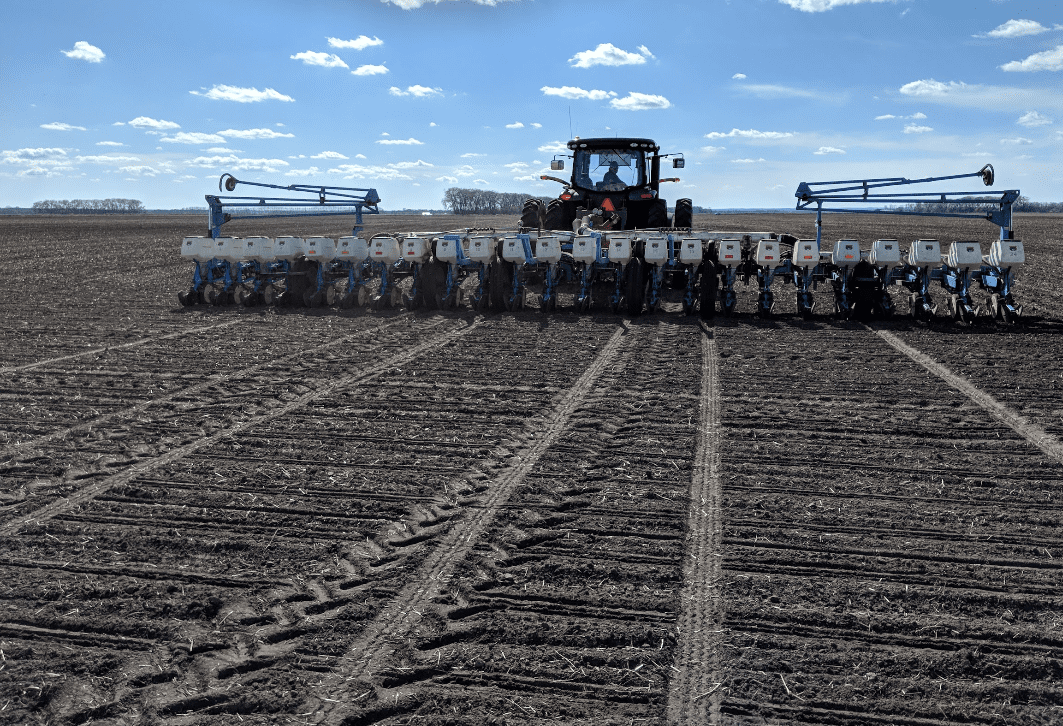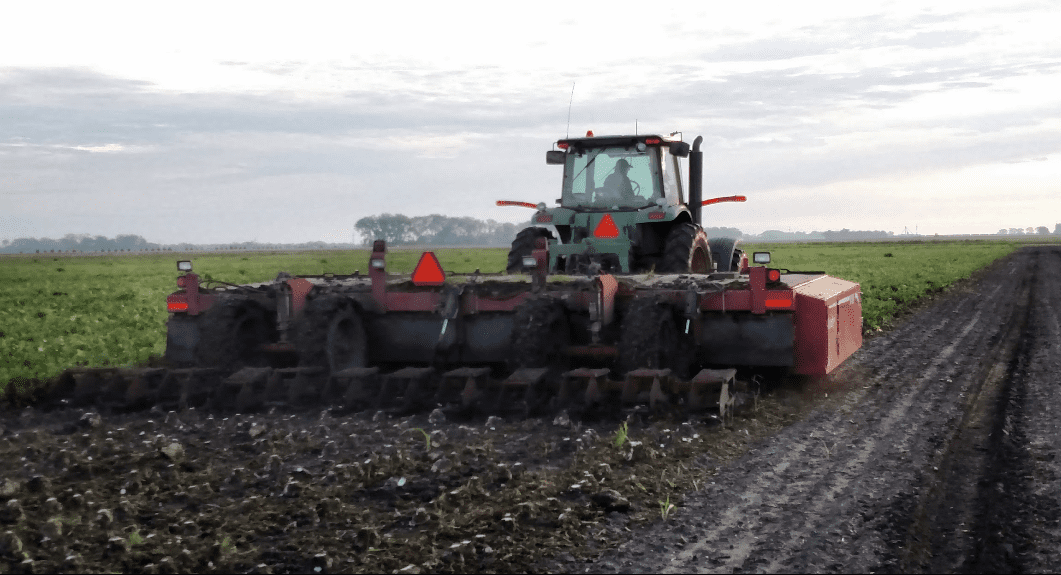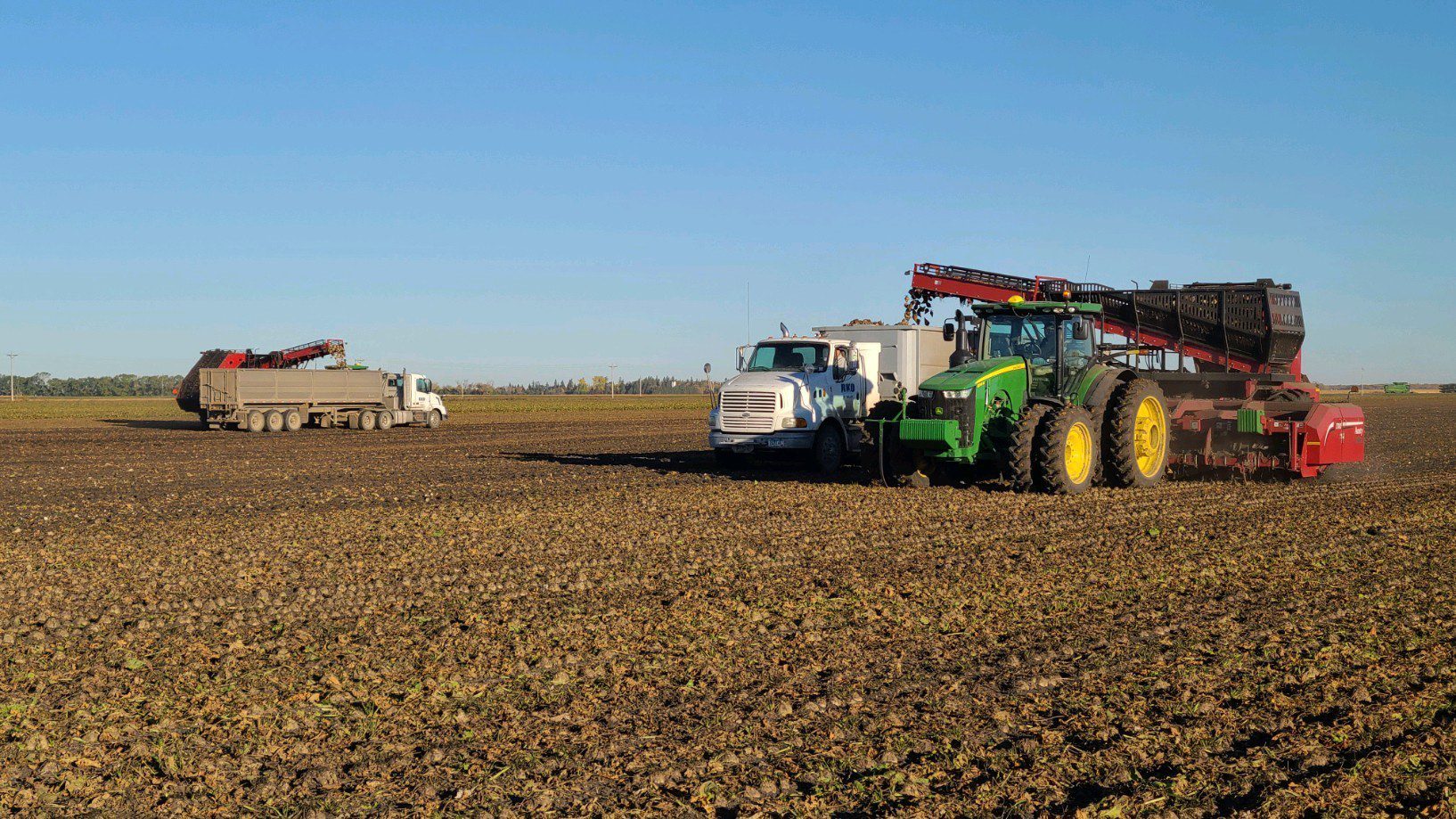Every industry has unique tools of the trade. Bakers, chefs and home cooks all have a wide range of specialized equipment available to make delicious food using sugar. A little over half of the sugar produced in the United States comes from sugar beets, which are grown on farms in eleven U.S. states. The sugar beet planter, lifter and defoliator are three key pieces of specialized farm equipment that help American sugar beet growers ensure there is real sugar on the shelves of grocery stores and pantries throughout the nation.
Sugar beets are a root crop that thrives in temperate climates where the growing season is about five months long. Farmers plant sugar beets from late March to early May and the process starts by getting the ground ready. A field cultivator, which is pulled by a tractor, has a shank, shovel and spring attached to a toolbar that tills the soil by sliding under the surface of the ground at a depth of 1 to 2 inches. This creates a level seedbed for the sugar beet seeds, which are planted at a depth of 0.5 to 1.25 inches. Cultivating the field also preserves seedbed moisture and helps eliminate early season weeds. Cultivation mixes in fertilizer and maintains enough crop residue on the soil to stop erosion and reduce the chance of wind damage to sugar beet seedlings as they emerge. Planting should be done as soon as possible after tillage before seedbed drying can occur.

After the field is cultivated, it’s time to plant the sugar beet seed! Depending on the model, a sugar beet planter consists of 12, 24 or 48 row units spaced 22 inches apart and pulled by a tractor at about 4 miles per hour. The sugar beet seed is placed into seed boxes on the top of each row unit. As the planter is driven through the field, a pair of disks set at an angle on the front of the planter make a trench opening in the soil. Then seed plates under the seed boxes select one seed at a time using vacuum pressure. The seed is dropped into a seed tube that deposits it into opening in the soil, and packer wheels on the back of the planter close the seed trench. Sugar beet planters space the seeds 4 to 6 inches apart and plant about 50,000 sugar beet seeds per acre.
By late September and early October, the sugar beets are fully grown and ready to harvest. A mature sugar beet is about a foot long, weighs two to five pounds, and is about 18 percent sucrose. The first step of harvesting sugar beets is to remove or “top” the leaves with a mechanical defoliator. These machines are pulled by tractors and can have 6, 8 or 12 rows. They have steel and rubber flails that spin on shafts and remove most of the sugar beet leaves. Stationary knife blades located at the back of the defoliator called “scalpers” then slice the remnants of the leaf stalks off the tops or “crowns” of the beets. It is very important that all leaves be removed from the sugar beets before they are stored in large outdoor piles. If the leaves aren’t completely removed, they can cause the sugar beets to rot in the pile.

After the sugar beets are “topped,” the sugar beet lifter pulls them out of the soil and loads them onto trucks. Sugar beet lifters have 6, 8 or 12 rows, depending on the model. (There are also self-propelled models which have a lifter, defoliator and tractor all in one unit.)

The lifter is pulled by a separate tractor and has lifter rings made of steel that roll along the ground at a depth of two to four inches. These wheels, which are set at an angle, pinch the sugar beets and lift them vertically out of the ground. About 120 to 200 beets per hundred feet are lifted on each row. The spinning paddle shaft, located above the lifter wheels, then tosses the sugar beets onto spinning grab rolls located behind the lifter wheels. The grab rolls separate the dirt from the sugar beets and move them onto an elevator. The elevator transports the sugar beets up onto a boom arm which extends over the box of a truck driving directly alongside the lifter. The boom arm deposits the sugar beets into the truck. Each truck can haul about 15 to 30 tons of sugar beets per load. When full, the truck delivers the sugar beets to piling sites or factories for storage and processing. The period during which sugar beets are first harvested through to the last beet being processed is called a “campaign.”

A beautiful cake or traditional dessert made with real sugar are perfect ways to mark life’s biggest moments. This specialized sugar beet equipment plants the seeds for a year’s worth of special occasions every spring and ensures the sugar beet crops get to the factories every fall. The factories operate twenty-four hours per day, seven days per week, and provide many employment opportunities in their communities. That’s something to celebrate!





Get Social with #MoreToSugar